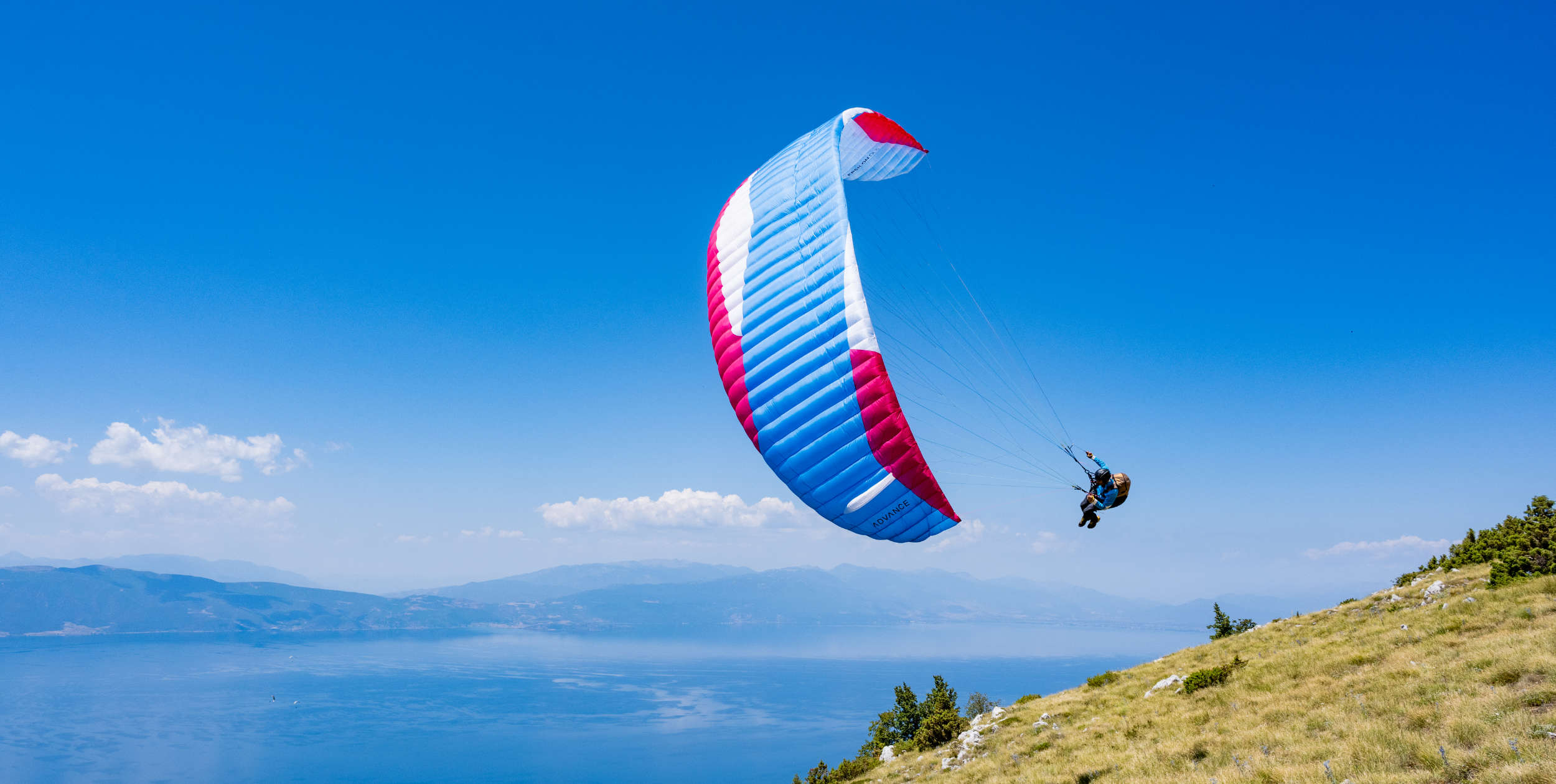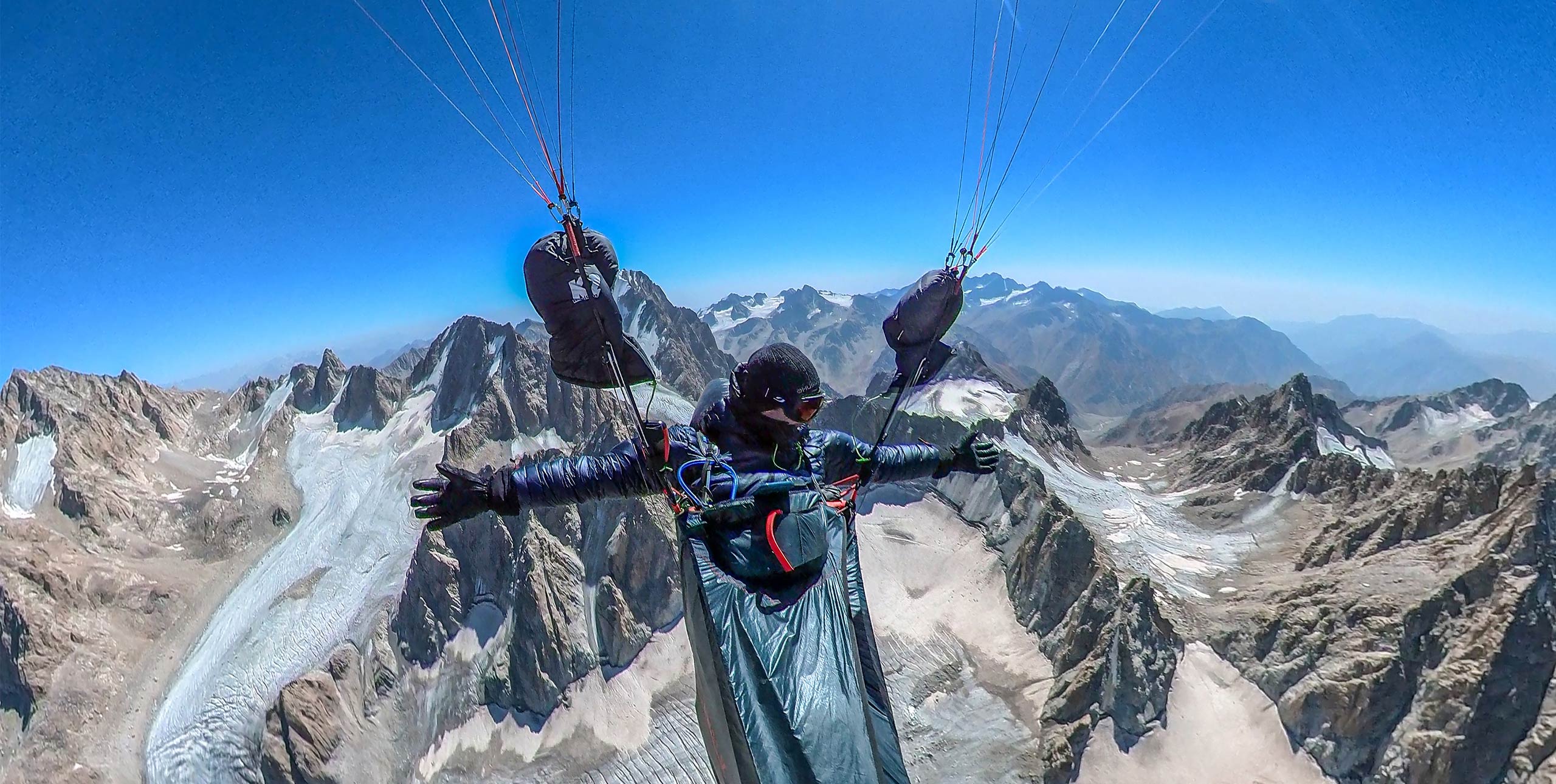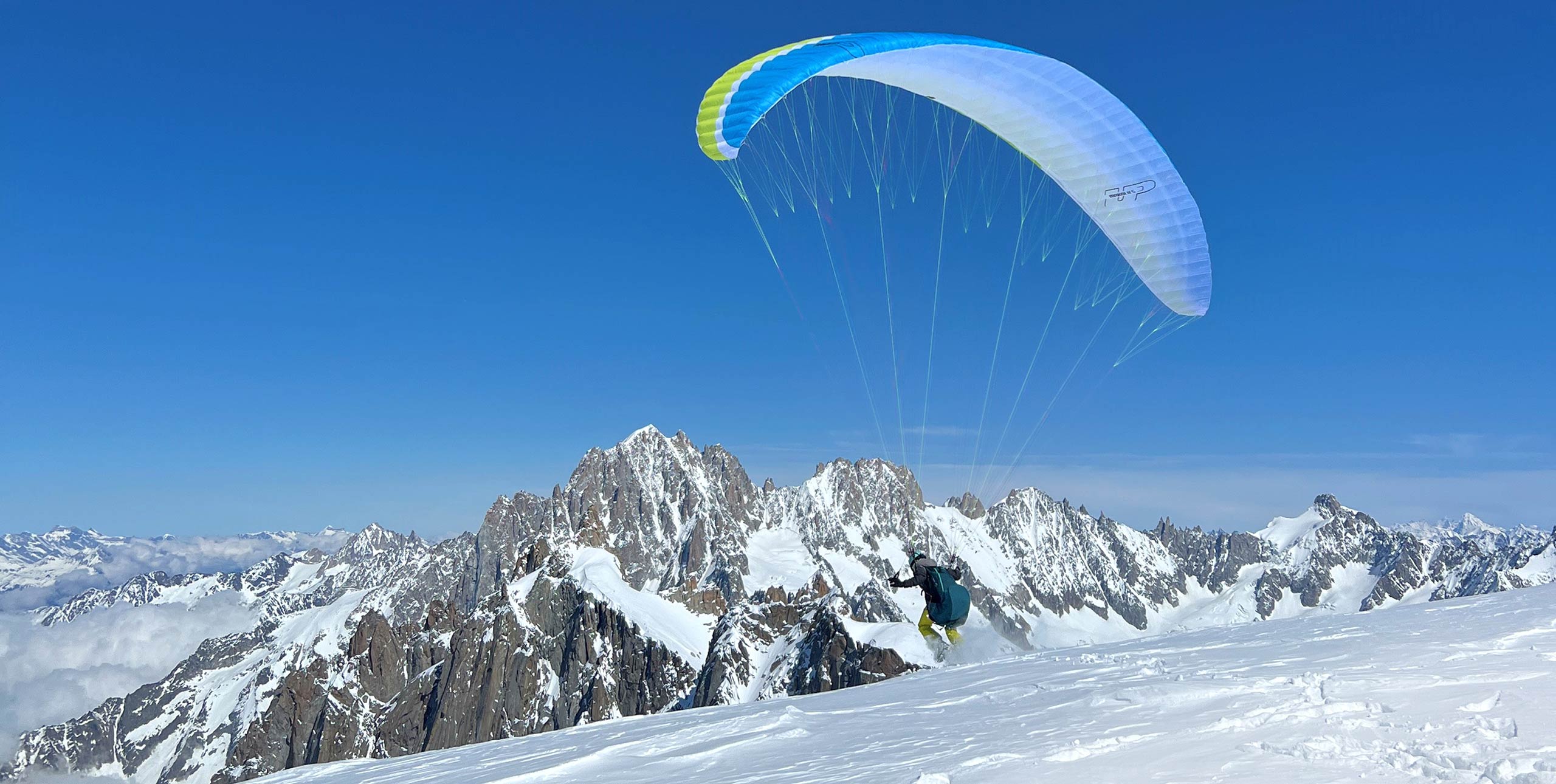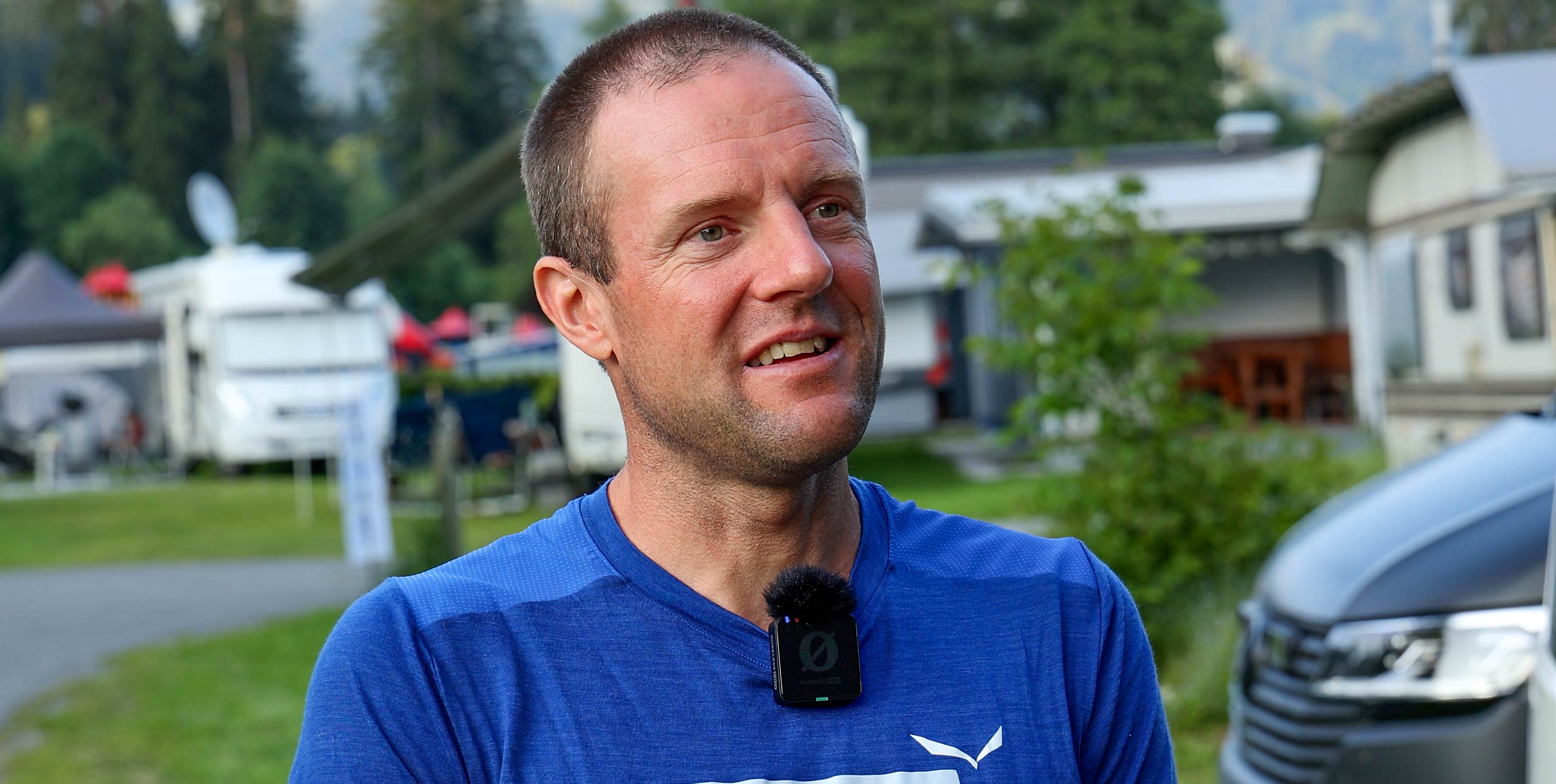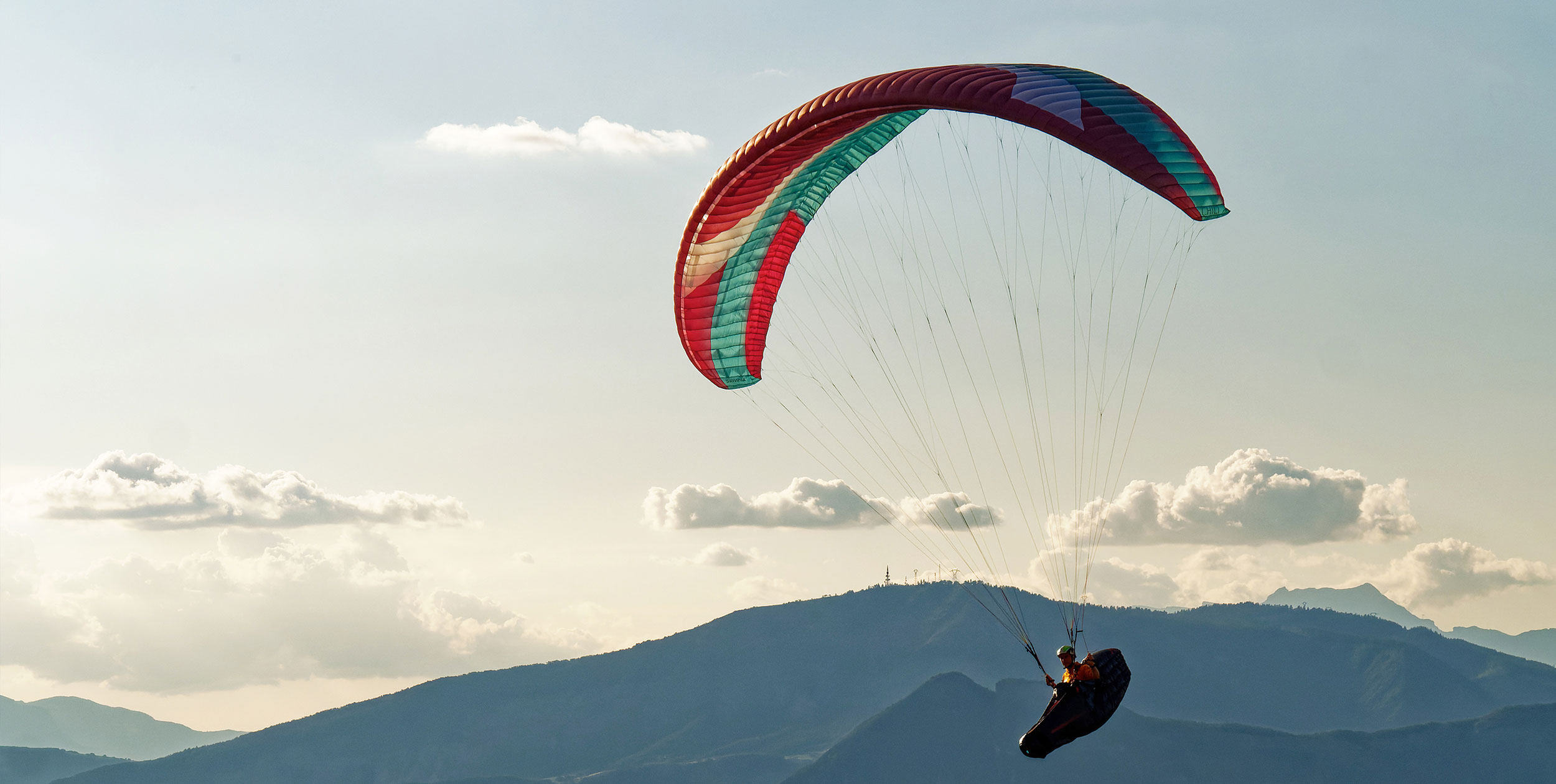
Erwin Voogt flies the new high-end EN-B intermediate from Skywalk.
At the end of the summer I had to go back to Saint-Vincent-les-Forts in the southern French Alps for another two weeks teaching paragliding to beginners. Even during the Covid pandemic, there remains a lot of interest in our beautiful sport!
Skywalk sent me their new high EN-B Chili 5 to try out while I was there. This allowed me to fly the wing under various conditions, from quiet flights together with students to the far-from-easy thermal conditions typical of the afternoons in Saint-Vincent-les-Forts. Nil wind at Chorges or turbulent south wind above Lac de Serre Ponçon, the Chili 5 was always fun to fly.
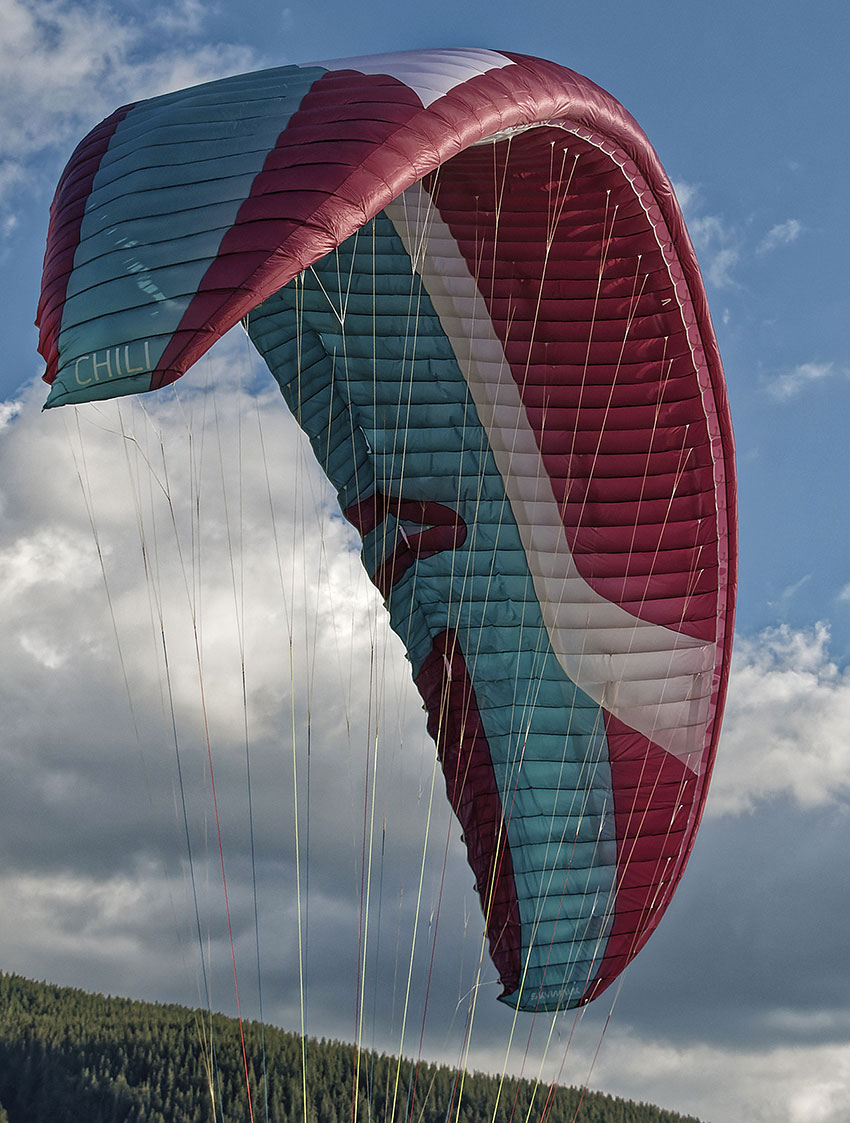
Photo: Miranda Oosterink
Design and construction
The Chili 5 is mostly constructed from the same materials as its big sister the Cayenne 6 (EN-C), which we reviewed last year. The upper sail is made from a combination of Dominico 30 DMF and TX-light, a fabric introduced in paragliding with the Cayenne 6. The lower sail is solely TX-light. Typical for TX-light is the double ripstop pattern weaved into it and a coating of polyurethane and silicone that should give it a better resistance against sun, sand, salt and water.
Ribs of Porcher Skytex 40g keep the mild sharknose of the leading edge in shape. Extra ribs halfway along some of the cells and mini-ribs at the trailing edge increase the stability of the shape of the wing. All the nylon rods are flexible and don’t require a special packing technique; it comes with a small inner bag and compression strap.
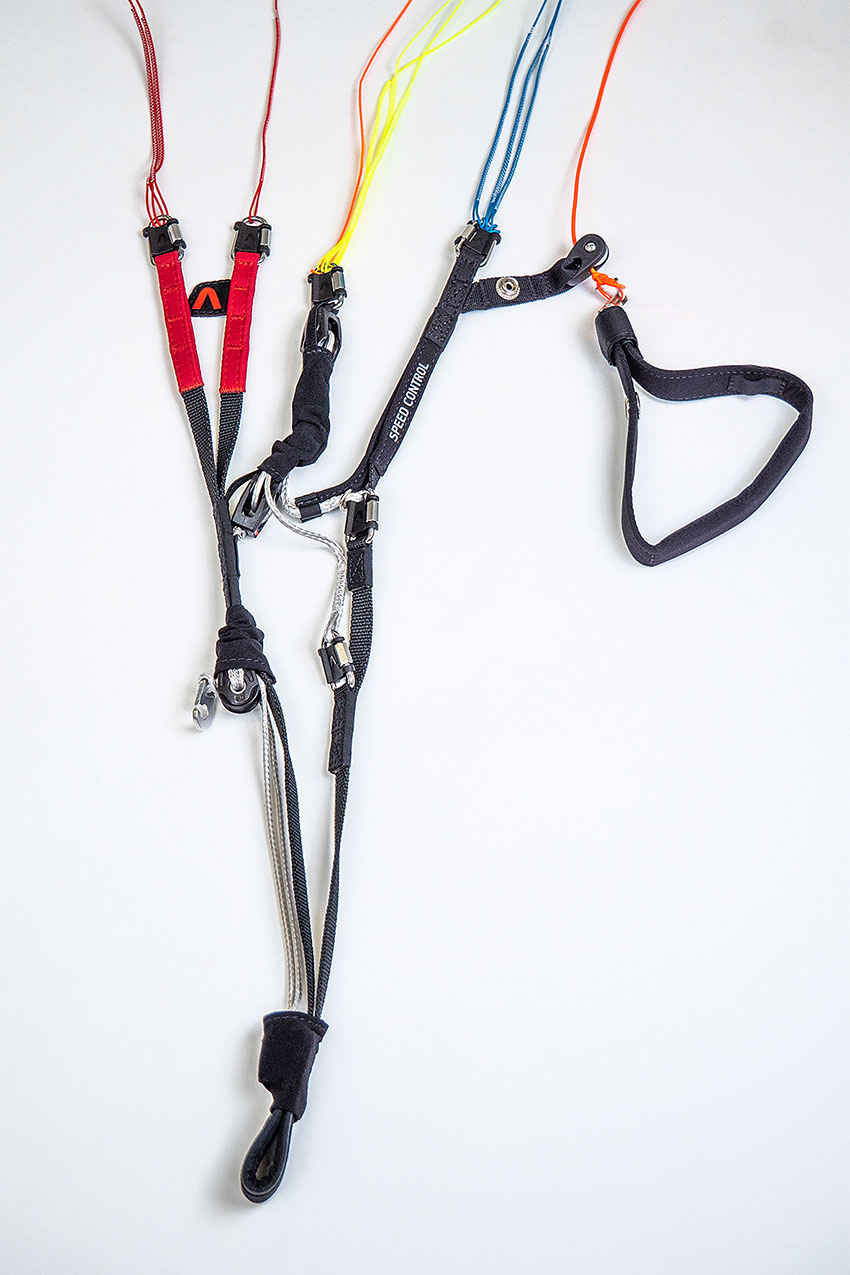
Unlike the Cayenne 6, the Chili 5 is not a true three-liner. At the top the C splits to C and D top lines. The lines are made of several Liros and Edelrid variants. The trend for high EN-B gliders seems to be going back from fully unsheathed towards sheathed lower lines. The Chili 5 has sheathed and coloured lower lines and this certainly makes sorting them easier.
The risers are straightforward 12mm webbing. The Ronstan speed system and C-steering pulleys are of the somewhat chunky type that more manufacturers use nowadays. The maillons have plastic inserts to keep the lines in the right place.
The brake handles are webbing and lightly padded neoprene – I wouldn’t mind if they were a little bit softer as I prefer to fly without gloves. The handles include a piece of Velcro to make them smaller: this could facilitate flying with a half wrap, but as the handles aren’t huge to begin with, I’m not sure this feature will be used a lot.

The glider and risers are designed for C-steering while on bar. Skywalk call it “Speed Control”, but the C-risers have no loops – you just grab the C-risers and that works fine. By pulling the Speed Control you basically (partly) undo the trim adjustment induced by the speed system: the C and B risers are pulled down to the level of the A riser. If you’re on full bar and pull the Speed Control to its maximum, then the A, B and C risers are level again and you are back on trim, although you have lifted yourself about 17cm closer to the wing.
All in all, the construction exudes good quality, as we can expect from Skywalk.
At 4.8kg in size XS, the Chili 5 is 200g lighter than the Cayenne 6 in the same weight range, even though it’s a slightly bigger wing (24.53 m2 versus 23.43 m2). But with ‘only’ 57 cells and a modest aspect ratio of 5.6, the Chili 5 is a different wing, as we will see.
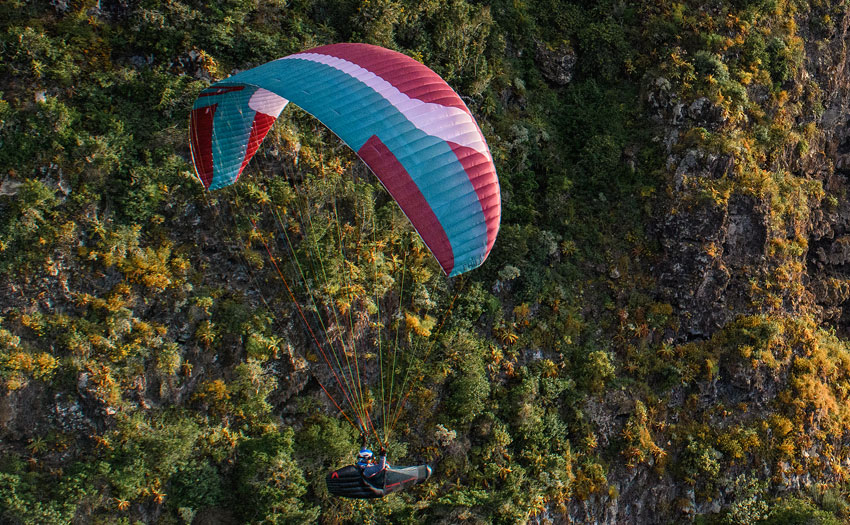
Launching
The first thing that struck me was how easily the Chili 5 launches. It was almost unfair to the students, the instructor having a glider that launches with just a simple pull. No need for Jedi groundhandling skills!
It does tend to accelerate a bit towards the zenith, so a little brake is needed to prevent shooting when launching in nil or little wind, but no special action is necessary. In higher winds it is very obedient, and even when lightly loaded it is very easy to kite.
Even on the launch at Saint-Vincent-les-Forts, where howling thermals can keep the faint hearted from taking off, the Chili 5 was relatively easy to handle. The wing inflates and rises very quickly, minimising that potentially dangerous tug when moving through the power zone. A light pull on the rear risers is enough to prevent getting lifted, if you think that is going to happen.
The lines sort easily, but a few times I got knots at the connections of the main lines and middle lines. Maybe this was caused by the newness of the lines, as the review glider came straight out of the factory. No worries however about the quality. Even the sharp rocks on the launch on nearby Mont Colombis didn’t do any harm.
The combination of super-easy launching, robustness of the materials, modest weight and packing size, make the Skywalk Chili 5 an interesting option for hike-and-fly if a few hundred grams extra don’t matter that much.
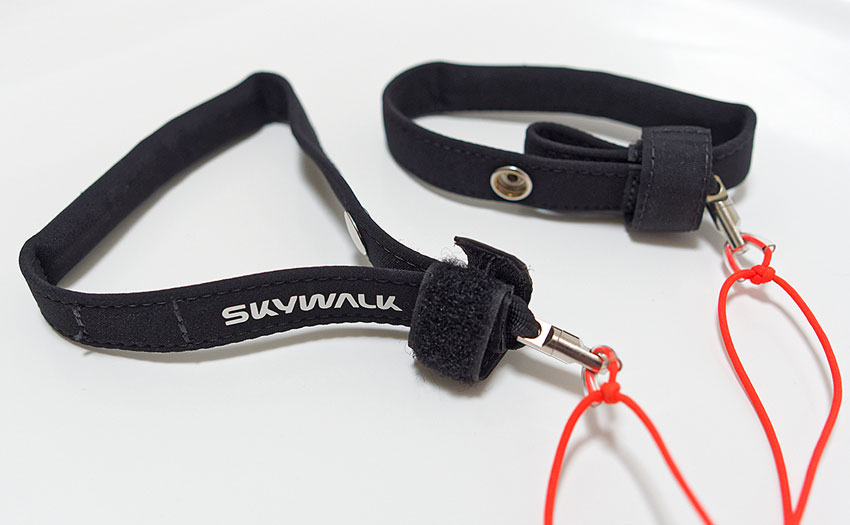
In the air
Skywalk say quite boldly that the Chili 5 flies intuitively as pilot and glider quickly become a single unit. And I must admit, they are not exaggerating. The Chili 5 is an agile and easy-to-control glider. It steers very well on weightshift alone, even with the lightweight Skywalk Range X-Alps 2 harness.
Skywalk recommend not loading the wing too high, and indeed at low wing loading (bottom half of the weight range) the wing is still very quick to react and can be placed where you want it very precisely.
Talking over the radio to students, taking pictures and meanwhile manoeuvring the glider just on weightshift was a breeze. In turbulent air – and I got my fair share of that – relatively little piloting is necessary to keep the glider on course. Thermalling is easy due to the agility of the wing, although it doesn’t bite into thermals as some other gliders do. The wing tells you what’s going on without unnecessary chatter and hardly changes course by itself. Compared to the Cayenne 6 there is much less roll, as expected from an EN-B versus an EN-C.
On full bar the wing remains rock solid and stable. The speed increases by about 10-12km/h. Although I did not measure it precisely, my guess is that the glide ratio on full bar is a step below that of its higher aspect ratio EN-C sister. Steering and pitch control while on bar can be done with the C risers – the “Speed Control” mentioned earlier. It works efficiently and is straightforward.
A trademark of Skywalk is of course the Jet Flaps: slotted flaps at the trailing edge of the wing. One of the things they are designed to do is reduce the flyable minimum speed. The effect is difficult to measure, but, by way of anecdotal evidence, for a wing with a modest aspect ratio the windy and turbulent top-landing at Saint-Vincent was relatively easy to perform with the Chili 5.

Fast descents
The outer A’s have, as usual, a separate riser for big ears. Pulling in big ears is straightforward and simple, a non-event. The same is true for making big big-ears. Add some speed bar and you have an easy and usable method to confidently make a quick getaway from anywhere you don’t want to be.
The Chili 5 is an agile wing. It’s like the younger brother that’s more playful and less talkative than its big sister, the EN-C Cayenne 6. However, the eagerness with which the Chili 5 dove into a spiral caught me a little bit by surprise the first time I did it. Once you are aware of it, it’s not a real problem, especially because the G-force is not beyond normal. (I think the radius of the circle is quite small, which limits the G-force.) But it turns fast! Once I got used to it, and despite the speed, spiralling is perfectly fine as a descent technique with the Chili 5.
Making spiral dives with both a regular sit harness (with seatboard) and the specialist Skywalk Range X-Alps 2 lightweight pod harness revealed for me again how important harness choice is. In the sit harness the spiral dive felt more relaxed, while using the pod harness the spiral needed more active piloting. This type of difference will be true across all makes of gliders and classes, and is worth remembering if you plan to pair a high-end pod harness with an intermediate glider – something you see a lot of these days. As always, the advice when flying spiral dives is to pilot into them, and pilot out of them.

The verdict
The Chili 5 is a textbook high-end intermediate. Agile but not demanding to fly, even in turbulent conditions. Launching is super easy and at the landing the glider can be flown at low speeds without losing control. Add to the package the excellent build quality and modest weight. This is a no stress, just go fly and have fun glider.
Manufacturer’s SPECIFICATIONS
Skywalk say: “The Chili 5 is a complete package in a class of its own … easy to fly with very manageable extreme flight behaviour. We have once again managed to improve the Chili in all areas to achieve maximum flying comfort and efficiency”
Use: Soaring, thermalling and XC
Pilot level: Intermediate and above
Sizes: XXS, XS, S, M, L.
Flat area (m²): 22.79, 24.53, 26.35, 28.23, 30.18
Weight: 4.5, 4.8, 5.0, 5.3, 5.6
Take-off weight (kg): 55-85, 70-95, 85-105, 95-115, 105-135
Cells: 57
Flat aspect ratio: 5.6
Certification: EN/LTF B
Erwin Voogt has flown paragliders since 2008 and is a paragliding instructor in the Netherlands. He enjoys all aspects of free flying – XC, hike-and-fly, a bit of acro and helping new pilots with their first steps. Erwin flew the Skywalk Chili 5 XS with the Skywalk Range X-Alps 2 pod harness and with a sit harness with seatboard at an all-up weight of about 84kg.
Published in issue 226 (Dec 2021 / Jan 2022)


